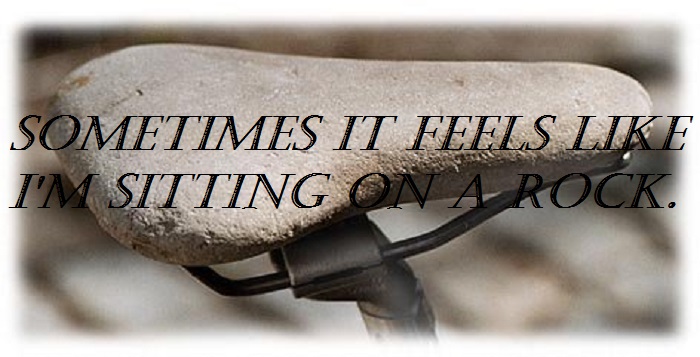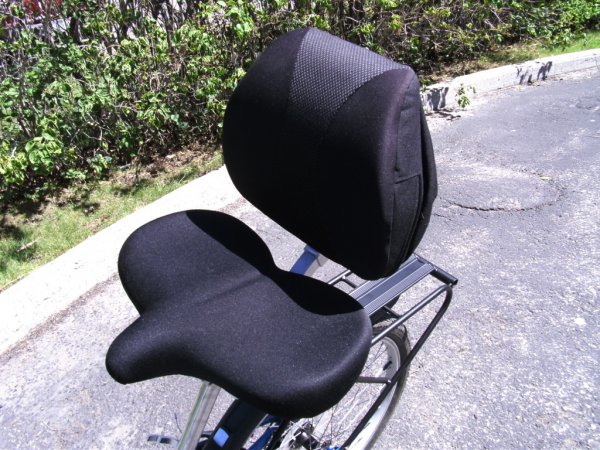You went out for your first ride in quite awhile this past weekend. It was great. You enjoyed the ride and the places you went except for one thing; you had a sore butt while you were riding and then after as well.
Getting a sore butt while riding can be a barrier that keeps you from riding more. Beginner cyclists all the way to experienced riders will get a sore butt from time to time. There are a few different factors that contribute to it and with the right know how, you can be riding without your butt hurting at all before you know it.
Why You Get A Sore Butt When You First Start Riding
When you first start anything new that is physical, your body takes some time to adapt to it and before it’s fully adapted, you might be a little sore in areas. The same premise applies to riding and sitting on a bike seat. Your butt wasn’t made to sit exclusively on a bike seat but the human body is pretty adept at adapting to things.
Getting Your Muscles And Tendons Used To A Bike Seat
When you first start riding and sitting on a bike seat, your muscles and tendons within your butt won’t be used to the pressure. This will happen regardless of if you have the right fitting seat or not. This can even happen if you have been a regular rider in the past but took some time off. Everything will take a ride or two to tighten up and get used to the demands of supporting your body weight on a bike seat.
Why Your Butt Hurts Cycling Even After You Have Been Riding
After a few rides, if your butt is still hurting, you likely have something wrong with the bike seat. It would be wise to make sure these things are correct before you suffer through a few rides to see if your butt will just adapt to the seat.
Saddle Width
When you sit on a bike seat your sit bones are what supports you. These are the two bony knobs that you can feel on the bottom of your rump. You want these to be firmly positioned on the saddle so they can support your weight. Some people have sit bones that are narrower together while some have wider sit bones, particularly women. If the sit bones are off the sides of the saddle, you are going to have a very uncomfortable ride as your sensitive area between your sit bones will be taking all of your weight. You need to find the width of your sit bones and find a correlating saddle. Your local bike shop will likely have an assortment to try.
Saddle Softness
In addition to having the right width saddle, you will also want a saddle with the correct hardness. It is a bit contrary to what you might think, but a super soft saddle is going to be uncomfortable. This is because your sit bones press down into the foam allowing the sensitive area between your sit bones to receive a lot more pressure. You want a saddle that is soft enough for your sit bones to be comfortable when absorbing your weight but not too soft that they press down into the saddle displacing your weight to other more sensitive areas.
Saddle Shape
The shape of your saddle can also influence how sore your butt gets while riding. Some are longer and thinner while others are shorter and fatter. Typically, the wider your sit bones, the more you will want to go with the latter. In addition, saddles can come with cut outs that relieve even more pressure off your sensitive areas. Some people like these and can’t ride anything else while some riders prefer not to use them. Try them out and see what works best for you.
Saddle Position
Another factor that can contribute to a sore butt while cycling is how your saddle is positioned. If it’s too far forward or backwards, you might be sitting on the wrong part of the saddle. You should be sitting on it where your sit bones firmly come into contact with it. Getting a bike fit can be a good idea to ensure this if you are riding long distances. Additionally, if your saddle is tilted to far forward or back, you can experience a sore butt. Typically you want to start with a level seat and see how it is. If you need to, you can adjust it a degree or two up or down but ideally you shouldn’t have to.
How To Prevent A Sore Butt Biking
So now that you know what causes a sore butt, how do you prevent getting one? For the first few rides after not riding for awhile, you will probably have one. But after that you should make sure you don’t so you can keep riding ’till your hearts content.
The Right Saddle
Getting the right saddle for you, as outlined above, is the most important part of not getting a sore butt while biking. If you don’t have the right saddle for you, you simply are never going to be comfortable on the bike and aren’t going to fully enjoy the ride.
Cycling Shorts
If you are riding longer distances, you should most definitely have a pair of cycling shorts. These are skin tight shorts that have a chamois, or padded material, in them to give you a softer, more comfortable ride.
Chamois Cream
If you experience chaffing, using chamois cream will help alleviate as well as prevent your discomfort. If it’s super hot out and you are going to be sweaty or if it’s raining, chamois cream is a very good option.
Standing Frequently
Regardless of if you’re riding around town or out for a long ride, you should stand and take some pressure off your butt every now and again. This will help ensure that there’s a constant blood flow and that your butt muscles don’t get too tight. Any time the road goes uphill is a good time to get out of the saddle. If you live in a flat area, you will have to make a conscious effort to get out of the saddle on a regular basis.

